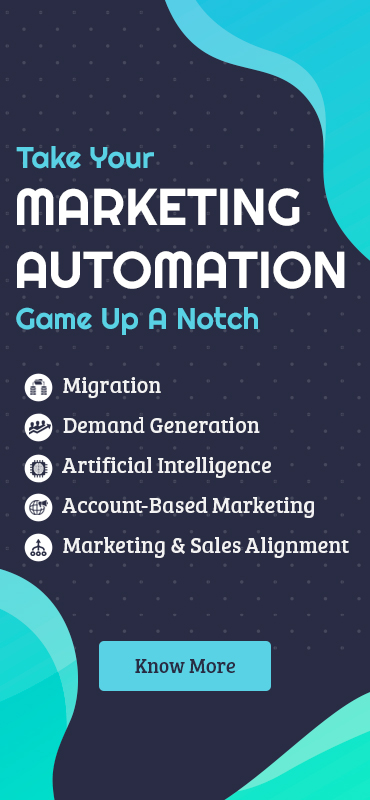Marketing Technology Landscape
The marketing technology landscape has seen an explosion in the number of software applications available to over 5,000 in 2017. Scott Brinker is credited with creating the Chief Marketing Technologist title in 2010. In my two decades as a marketing practitioner and now as a Marketing and Digital transformation consultant, I have witnessed the growth and importance of Martech. From the early days of marketing automation tools, online marketing platforms to big data analytics and artificial intelligence-driven marketing operations, the marketers have often been enticed into introducing the newest and the shiniest MarTech object into their existing stack, many times, without a well-thought-out plan and without consideration of the possible consequences.
From the early days of marketing automation tools, online marketing platforms to big data analytics and artificial intelligence-driven marketing operations, the marketers have often been enticed into introducing the newest and the shiniest MarTech object into their existing stack, many times, without a well-thought-out plan and without consideration of the possible consequences. In most cases, marketing technology investments have led to creating more silos versus an integrated approach, which has been the end goal for having a well managed marketing operation. Marketing data is now even more spread and disjointed, the 360° view of customers seems as elusive as ever, demand centers and marketing operations are busy stitching the technologies together and not focusing on driving marketing results. Marketing functions like product marketing, online marketing, and customer marketing are living in a world of siloed analytics and have blinders view of their customers and prospects.[/vc_column_text][vc_column_text dp_animation=””]
In most cases, marketing technology investments have led to creating more silos versus an integrated approach, which has been the end goal for having a well managed marketing operation. Marketing data is now even more spread and disjointed, the 360° view of customers seems as elusive as ever, demand centers and marketing operations are busy stitching the technologies together and not focusing on driving marketing results. Marketing functions like product marketing, online marketing, and customer marketing are living in a world of siloed analytics and have blinders view of their customers and prospects.[/vc_column_text][vc_column_text dp_animation=””]
Get a Free Digital Marketing Audit! Click Here
5 Keys to Being Pragmatic When Making Martech Decisions
It is most important to make a well informed decision before introducing a new component in your marketing technology stack. Sometimes saying no or waiting for the right time to make the investment is the most pragmatic thing to do. The five key questions you need to ask yourself to make a more informed and result-oriented decision are:
1. DO YOU REALLY NEED IT AND WHAT RESULTS WOULD IT DERIVE?
The big question to ask is how are you doing what the new application enables in absence of it. Is it really going to have a compounding impact on results or does it simply automate something being done manually and help scale it? Or is it going to enable and introduce a new marketing channel or approach? If so, are your ecosystem teams ready to embrace it and invest in a new marketing component? What new or difference in results do you envision and how are you going to track those results? Having clear quantifiable results along with qualitative outcomes should be at the fore of your decision inputs.
2. IS IT A NATURAL FIT TO YOUR CURRENT MARTECH MODEL?
Does it fit in the stage of Martech maturity your organization may be in and is it the next logical step in the right direction? Every organization that is serious about marketing needs to have a Martech roadmap that is strictly controlled and governed through defined processes. Any changes to the Maretch roadmap need to go through an evaluation process, a change control process and proper implementation procedures. Remember, it is technology, so needs to be treated like tech. If your marketing team does not have enough tech-depth, consult your IT teams or a consultant. Even with technocrats on the marketing team, it makes sense to consult and get validation.
3. WHAT IS THE TOTAL COST OF OWNERSHIP?
What would you need to change in your current environment to introduce the new technology? Realistic evaluation of the total cost of ownership for making the introduction successful in terms of direct purchase price and indirect cost (time and effort, external consulting services, opportunity cost) is important to avoid frustration and friction down the road. The leading cause of failure for marketing technology is the inability of an organization to understand what it will entail to make the implementation successful and not just live.
4. IS IT WORTH THE INVESTMENT AND JOURNEY?
Done right, what value would the new addition add to your marketing ROI and process improvements? An easy way to determine this is to make sure it is in line with your organization’s goals. For example, if your organization is trying to increase sales to existing customers in the next 6-12 months, is this technology going to have a direct impact on customer retention and upsells or not? A counter argument could be that some martech investments would yield results in the long term, but those long-term decisions should require even more diligence and thoughtful approach and have to be in line with your long term organizational goals.
5. HOW DOES IT INTEGRATE AND PROVIDE ADDITIONAL VALUE?
How will you access and integrate data from the new application into your comprehensive marketing process? Will the data from the new application add valuable insights that could help your organization get better at marketing? This in my view is often ignored and most important factor one should have in mind when making a decision. If the new technology cannot be properly integrated into your environment, it is likely that it will not yield the desired results. With increased focus on attribution-based ROI, it is extremely important that the impact of marketing technology and what it enables can be rightfully tracked against a customer’s journey.











